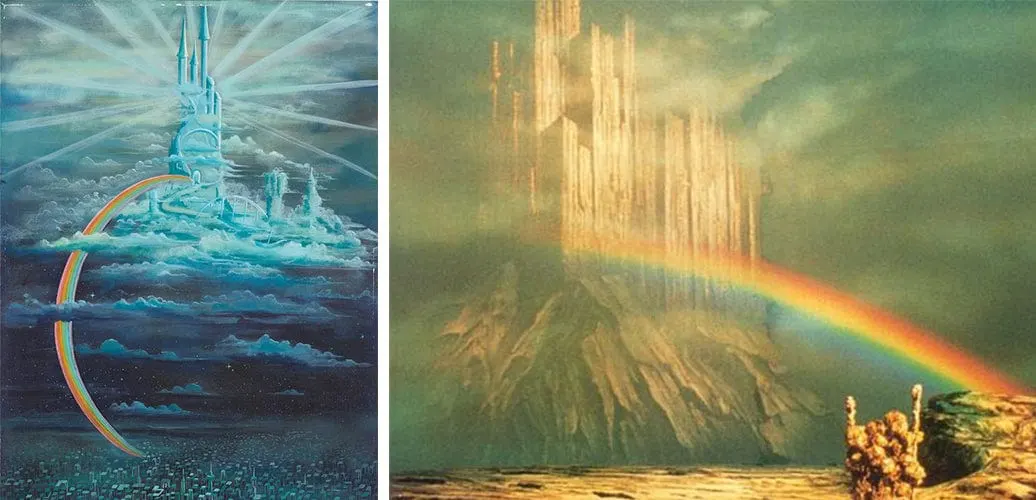Nordic Discovery
Bifrost: The Rainbow Bridge Connecting Heaven and Earth in Norse Mythology
In the vivid world of Norse mythology, few images are as striking as Bifrost the radiant rainbow bridge that arches between Midgard (the world of humans) and Asgard (the realm of the gods). More than a mythic pathway, Bifrost is a symbol of connection, guardianship, and the balance between divine and mortal realms.
This article will take you across Bifrost, exploring its origins, its role in the cosmos, the guardian Heimdall, and its fiery fall in the final battle of Ragnarok.
What Is Bifrost?
Bifrost (also known as Bilröst) is the glowing bridge built by the gods to connect the human world with their divine home. Described in sources like the Prose Edda as shimmering with colors, it is often interpreted as a rainbow — though unlike a typical rainbow, Bifrost is said to burn with fire, making it both beautiful and deadly.
The gods used Bifrost daily to travel to Urd’s Well, where they held their councils beneath the roots of Yggdrasil.
The Structure and Nature of Bifrost
According to the myths, Bifrost has three essential traits:
- Radiance: It spans the sky in brilliant, shifting colors — often described as a rainbow.
- Flame: A fiery element runs along its surface, preventing unworthy beings from crossing.
- Strength and Fragility: Built by the gods, Bifrost is strong enough to support divine travel but too delicate for the giants, who are forbidden to use it.
It is said that Bifrost rests upon three roots of Yggdrasil and touches all realms, though it primarily links Midgard and Asgard.
Heimdall: Guardian of the Bridge

Bifrost is guarded by Heimdall, the watchful god with senses so sharp he can hear grass grow and see to the ends of the Nine Worlds. He lives in Himinbjorg, his dwelling at the edge of Asgard, right by the entrance to Bifrost.
Heimdall’s duties include:
- Preventing the giants from invading Asgard.
- Watching over the Nine Realms for signs of danger.
- Blowing the Gjallarhorn, the great horn that signals the beginning of Ragnarok.
Heimdall’s role as the bridge’s sentinel reinforces Bifrost as a threshold between order and chaos.
Bifrost’s Role in Norse Cosmology
Bifrost symbolizes the link between:
- Humanity and Divinity: A rare connection allowing the gods to influence and observe mortals.
- Earth and Sky: A cosmic structure, showing harmony in the Norse universe.
- Order and Destruction: It protects Asgard but is fated to be destroyed when its purpose is fulfilled.
It is a liminal space — a place of transition, challenge, and transformation.
The Destruction of Bifrost in Ragnarok
Like many elements of Norse mythology, Bifrost’s glory is shadowed by its destined fall.
During Ragnarok, the bridge will shatter as the forces of chaos including giants, monsters, and the dead march upon Asgard. The myth states:
“The bridge shall break when the sons of Muspel ride over it.”
This symbolic destruction marks the collapse of the old order, paving the way for renewal in the aftermath of cosmic war.
Bifrost in Modern Culture
Bifrost continues to appear in modern media, often adapted as a gateway between worlds:
- In Marvel’s Thor films, Bifrost is a swirling energy beam powered by the Bifrost sword.
- In games like God of War or Assassin’s Creed: Valhalla, it serves as a portal between realms.
- In spiritual and artistic contexts, Bifrost represents personal transformation and the path to the divine.
These reinterpretations show how Norse symbols continue to inspire across centuries.
Conclusion
Bifrost is more than just a mythological rainbow. It is a bridge between realities between gods and humans, life and death, order and chaos. In guarding it, Heimdall watches over the cosmic balance. And in its fall, the Norse myths teach that even divine connections must yield to fate.

